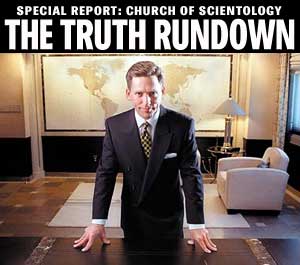Did you know they still do paste-up at the San Diego Union-Tribune? That’s just one of the revelations in a story about the new openness of the U-T’s management, an openness that is apparently playing very well with employees. Having laid off more than 300 people since taking control of the daily in May, Platinum Equity is now forecasting a profit of $5 million this year, which would be a major turnaround from the $8 million the paper was on track to lose when new management arrived.
The extent of the new ownership’s transparency about the paper’s finances and operations apparently surprised and pleased staffers, who had been privy to almost no financial information under former owners the Copley family. They learned that the U-T’s revenues have dropped 53% since 2006 while profitability has plummeted from $67 million that year to the expected $8 million loss this year. They also learned that the paper has shed nearly half its staff in the last 21 months. However, cuts like that are what set the stage for a return to profitability. Staffers apparently liked what they heard. They told Voice of San Diego that Platinum’s decisiveness was a welcome change from the plodding pace of change under the Copleys. Now they need to work on getting rid of those paste-up boards.
Platinum’s early success at the U-T is apparently not typical of private equity firms. Yesterday’s blockbuster announcement that Reader’s Digest is bankrupt cast a harsh spotlight on Ripplewood Holdings, which bought the publisher for $1.6 billion in 2007 and which has now seen that entire investment wiped out by bankruptcy. Reader’s Digest magazine, which was once a coffee-table staple, has suffered circulation declines of more than half over the last 30 years and 40% in the last decade. The company is staggering under $2.2 billion in debt. Under the proposed reorganization, creditors will now own 92.5% of the company, which publishes more than 100 titles. Even after the debt is restructured, though, Readers Digest will owe four times its annual earnings to lenders.
Meanwhile, the owner of Philadelphia’s two largest newspapers has proposed an audacious plan to get creditors off his back. Brian Tierney wants to swap $300 million in debt for $90 million in cash, real estate and bankruptcy costs. Under the proposed deal, creditors would get little ownership stake in Philadelphia Newspaper Holdings, while the company would walk away from most of its debt. Tierney appears to be betting that the alternative of total insolvency will scare lenders into accepting the deal, but an attorney for the creditors calls the plan a “horrible proposal.”
Miscellany
The Financial Times began charging for access to its website in 2002, and history is vindicating the London-based publisher. With media leaders like Rupert Murdoch now openly advocating for pay walls, the FT is stepping up its experimentation with new paid-content models. It plans to add a micropayment system for access to individual articles and it recently launched an online newsletter for investors in China that costs $4,138 a year for a subscription. The FT newspaper has only 117,000 paid online subscribers, compared to more than one million for The Wall Street Journal, but it charges $300 a year for Web access. CEO John Ridding says he’s pleased that the industry is finally coming around to seeing things the way the FT has seen them for many years. “Quality journalism has to be paid for,” he tells The New York Times.
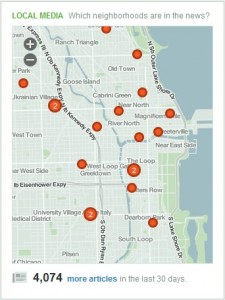 A partnership of Microsoft and MSNBC made off with EveryBlock and Alan Mutter can’t quite believe it. “If ever there were an application designed to fast-forward newspapers into at least the late 20th Century, then this was it,” he writes. Funded by a Knight Foundation grant, EveryBlock (screen grab at right) is perhaps the nation’s most visible experiment in hyperlocal news. It covers 15 cities with news focused on tight geographic segments. Under Microsoft/MSNBC ownership, expect that coverage to expand dramatically. Microsoft was actually an early innovator in hyperlocal publishing with its Sidewalk city guides more than a decade ago. Sidewalk bombed, but the concept may simply have been ahead of its time.
A partnership of Microsoft and MSNBC made off with EveryBlock and Alan Mutter can’t quite believe it. “If ever there were an application designed to fast-forward newspapers into at least the late 20th Century, then this was it,” he writes. Funded by a Knight Foundation grant, EveryBlock (screen grab at right) is perhaps the nation’s most visible experiment in hyperlocal news. It covers 15 cities with news focused on tight geographic segments. Under Microsoft/MSNBC ownership, expect that coverage to expand dramatically. Microsoft was actually an early innovator in hyperlocal publishing with its Sidewalk city guides more than a decade ago. Sidewalk bombed, but the concept may simply have been ahead of its time.
Things continue to rock and roll under new ownership at the Waco Tribune. A few weeks ago, the paper made headlines when the new owner added the words “In God We Trust” under the front-page logo. Now it has jettisoned rock musician and gun activist Ted Nugent as a columnist after Nugent refused to tone down invective and personal attacks in a weekly guest column he writes. Editor Carlos Sanchez makes it clear that he was somewhat reluctant to carry out the new owner’s orders to reprimand Nugent, but he was stunned and outraged by the tactics Nugent used to lodge his protests.
The AP has one of those charming throwback pieces about The Budget, a 119-year-old newspaper that serves Amish and Mennonite communities and which seems to have none of the problems or pressures of its Internet-addled counterparts. In fact, the 20,000 readers seem to be quite militant about keeping The Budget in print and delivered by mail to their homes each week. The Budget’s owners and editors aren’t Amish, but they’re careful not to offend their pious readership. Ads for alcohol and tobacco aren’t accepted and much of the content consists of homespun diary entries submitted by a network of unpaid correspondents. To the geographically dispersed Amish, The Budget is kind of a hard-copy Facebook. It’s the way they keep up to date on births, deaths and the price of wheat. Circulation has stayed strong even during the economic downturn.

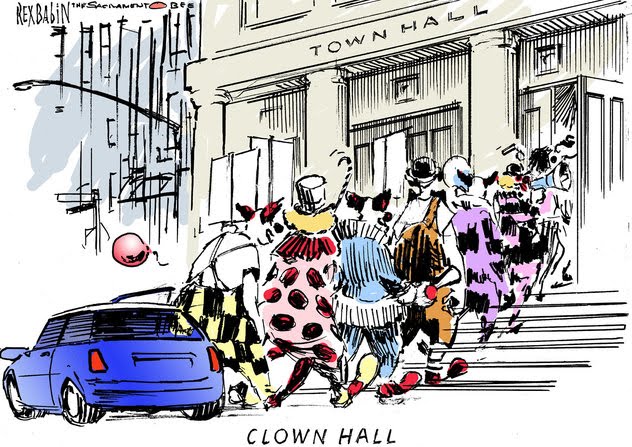
 Amid the wreckage of the media industry, there is at least
Amid the wreckage of the media industry, there is at least 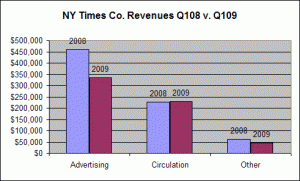
 Another group of Rocky Mountain News ex-pats is
Another group of Rocky Mountain News ex-pats is 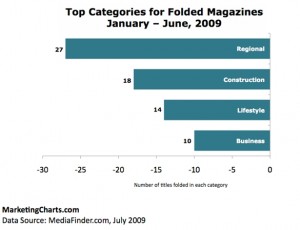
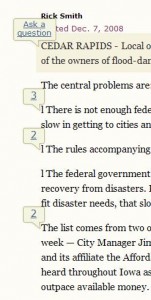
 Circulation at the Los Angeles Times passed one million in 1961. Last month it passed one million again –
Circulation at the Los Angeles Times passed one million in 1961. Last month it passed one million again – 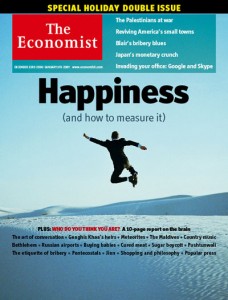 Magazine publishers might want to catch the next flight to London to find out what the heck they’re doing right at The Economist Group.
Magazine publishers might want to catch the next flight to London to find out what the heck they’re doing right at The Economist Group. 
